







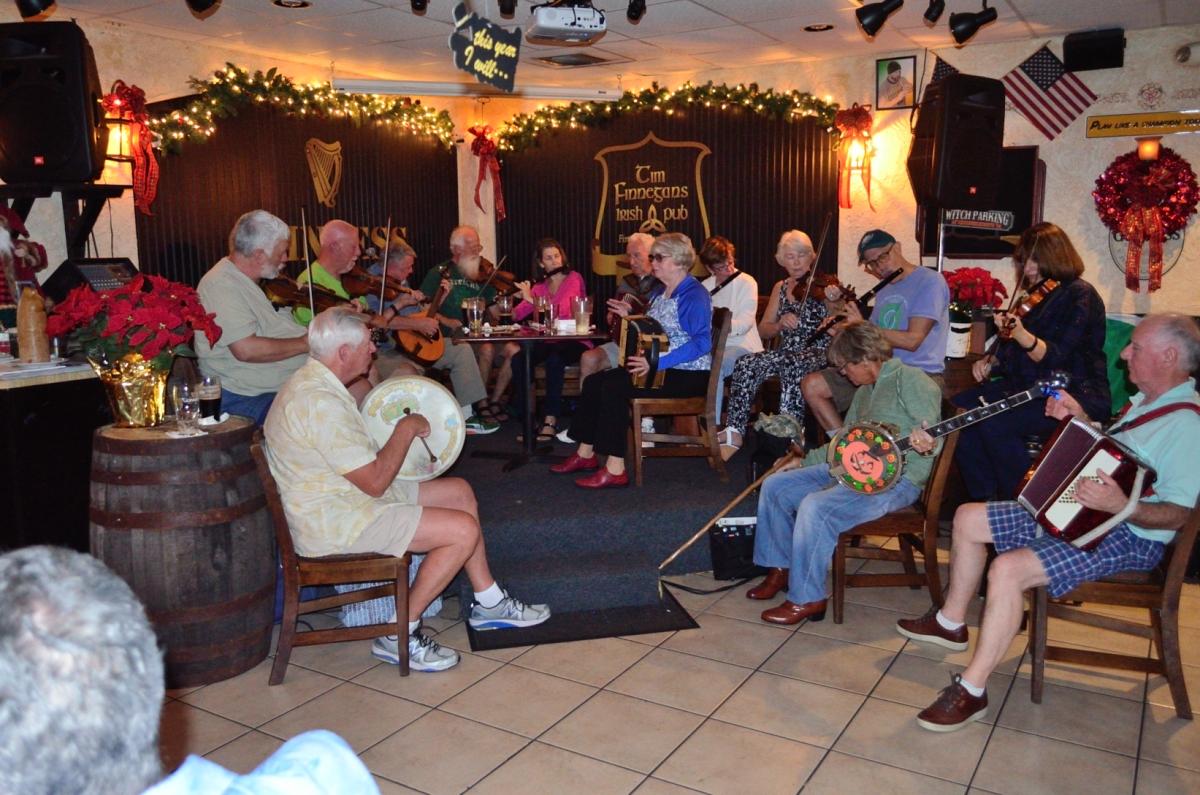
Irish Seisiún Newsletter
Thanks to our past editors - Mary Gallacher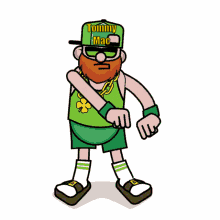 and Bill Padden
and Bill Padden
Editor Tommy Mac 
............
....Today's date and new proverb
![]()
Attention Session Players
New Set to Learn This Week
Go to the Players Page
![]()
Sunday's Seisiún
for October 12, 2025
‘Tá dúil ár n-anama sa cheol againn.’
Music is our soul’s desire.
.......Thanks again to
Bob Murphy, Pat Quinn, Randy Powell, Art Jacoby, and Kevin Westley
for supplying photos and info about our sessiuns.
Greetings!
A rollicking session today with Bob, Art, Seamus, and Patrick on fiddles, Ben and Seth (a visitor from Maine) on banjos, and Randy (that’s me) on bouzouki.
Some of the tunes included: Haunted House, My Darling Asleep, and Off She Goes; Old Hag You Have Killed Me and Dinny Delaney’s; The Banshee, Maid Behind the Bar, and Sligo Maid; Down the Broom and Gatehouse Maid; Calliope House, The Black Rogue, and Rambling Pitchfork; Brendan Tonra’s, Killavil Jig, and Carraroe Jig; Dusty Windowsills, Rose In The Heather, and Kesh Jig; Red-Haired Boy and Ships Are Sailing; Ryan’s Slip Jig, Drops of Brandy, and The Foxhunt; Garrech’s Wedding, Fig For A Kiss, and Farewell to Whaley Range; Kid on the Mountain; Follow Me Down to Milltown and Donnie Nolan’s; Lads of Laois, Earl’s Chair, The Musical Priest, and The Old Blackthorn; Charlie Harris’ Polka, Ballysdesmond #2, and John Ryan’s; The Cutting Slide; The Belfast Hornpipe, Harvest Home, Off to California, and Plaines of Boyle; Lark In The Morning, The Connaughtman’s Ramble.
We had a few songs including Irish Soldier Laddie, and I’ll Tell Me Ma.
Many thanks for taking care of the newsletter and we’ll see you soon!
Randy
photos by Bob
.
Chilly 77 degrees
Sitting by the fire
Video of new tune Kid on the Mountaim
Click any of the above logos to go to that site
.
 "That’s
How I Spell Ireland"
"That’s
How I Spell Ireland"
Saturdays at 7 to 8 PM EST.
You can listen on 88.7FM or WRHU.org.
For a request please text me on 917 699-4768.Kevin and Joan Westley
Note: Show will be preempted whenever the NY Islanders have a Saturday game
![]()

Finnegan's Events
Check out their calender
They support us - Let's support them
![]()

E-Mails Received
Tommy, I just received this from my good friend in Chicagoland and thought you should know your work is appreciated far and wide.
Jack Spannbauer
This Finnegans newsletter is a keeper and I’ve only gotten to the Sheehan Thatch House celebration. Twenty minutes long but only two minutes of Irish Blarney comprehensible, it is a classic in Irish Storytelling. The endless tales going some where mysterious take short break to deliver a good laugh. I know why I enjoy my endless stories.
Gratefully, B Bill Flynn
Thanks Jack and Bill, I'm happy you enjoy our little newsletter...Tommy Mac
![]()
A look back in time
Tom
Here’s our Ceilí band from 13 years ago with Seamus and Kevin playing for dancers at the pub in Lake Worth. Fun times!
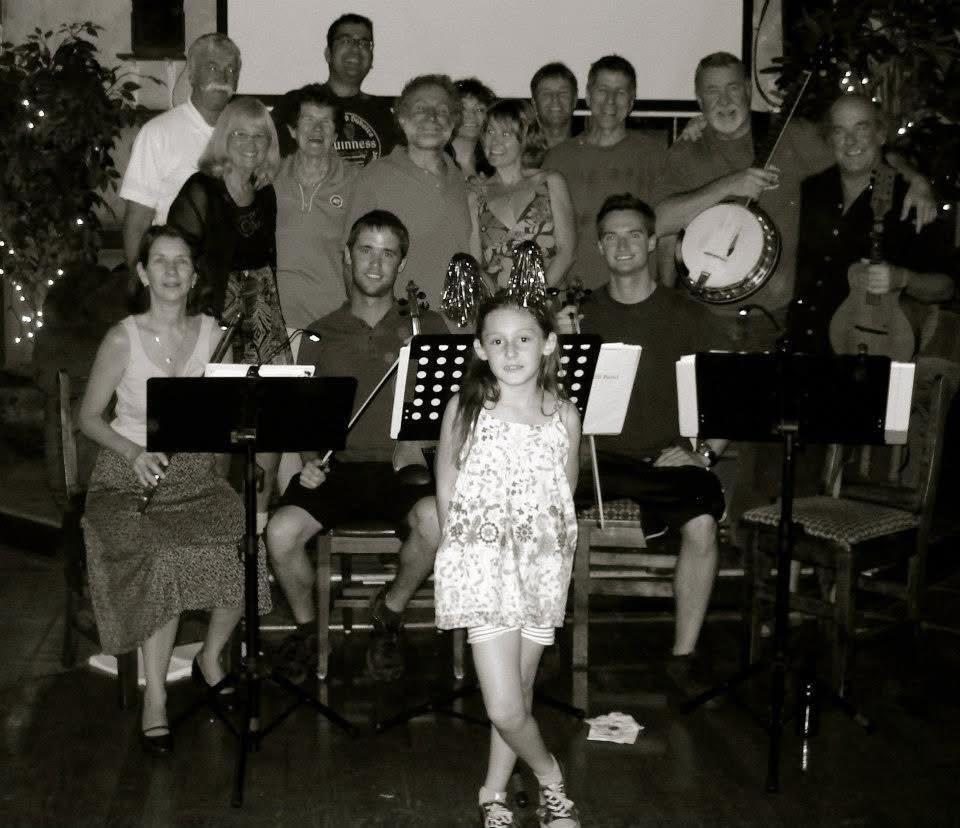
Randy
![]()
Old Ireland
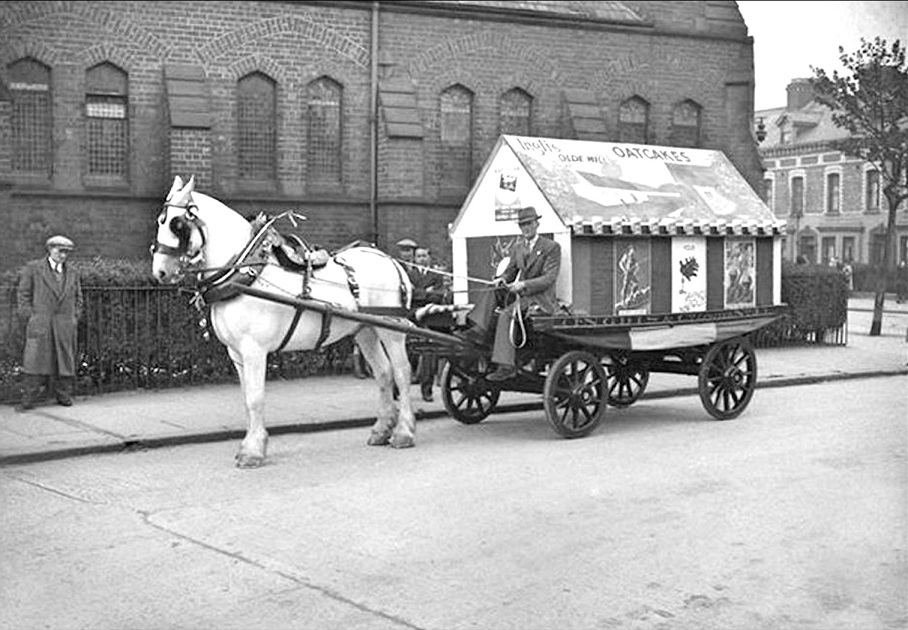
War Time Belfast.
Inglis Bakery Cart Decorated for Salute The Soldier Week,
at Paxton Street, Belfast. May 1944.
![]()

FAVOURITE PLACES IN IRELAND
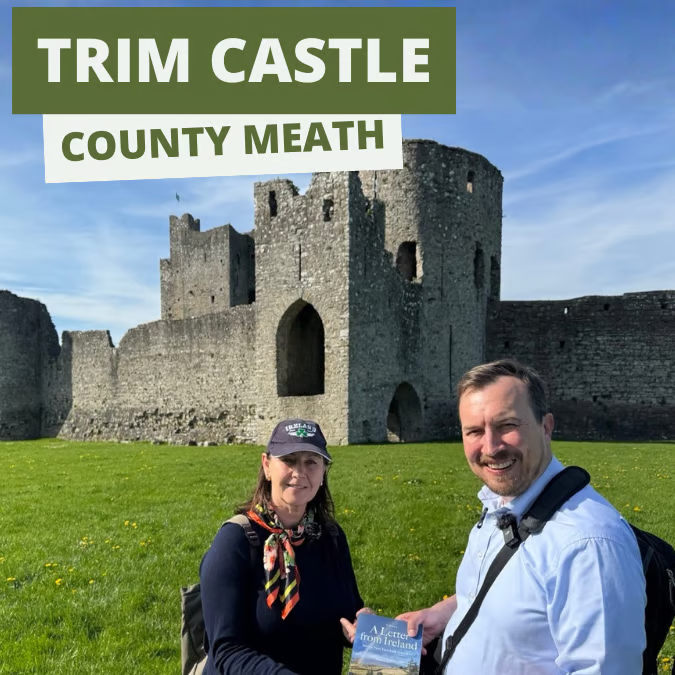
Trim Castle, County Meath.
Rising majestically above the River Boyne, Trim Castle stands as Ireland's largest Anglo-Norman fortress. Built in 1173 by Hugh de Lacy, this mighty stronghold has witnessed centuries of Irish history and even starred as a backdrop in the film "Braveheart."
Check out this video for a brief and interesting look into the castle's history. We had the pleasure of visiting with Neil Jackman of Tuatha.ie, who gave us a wonderful tour of this historic site.
We're still working on the video (coming soon!), but in the meantime you can explore his excellent free guide to Trim Castle.
And if you're fond of County Meath and a good traditional music session, you'll love this video.
![]()
Travel Quiz
Can you identify this site and it's location in Ireland?
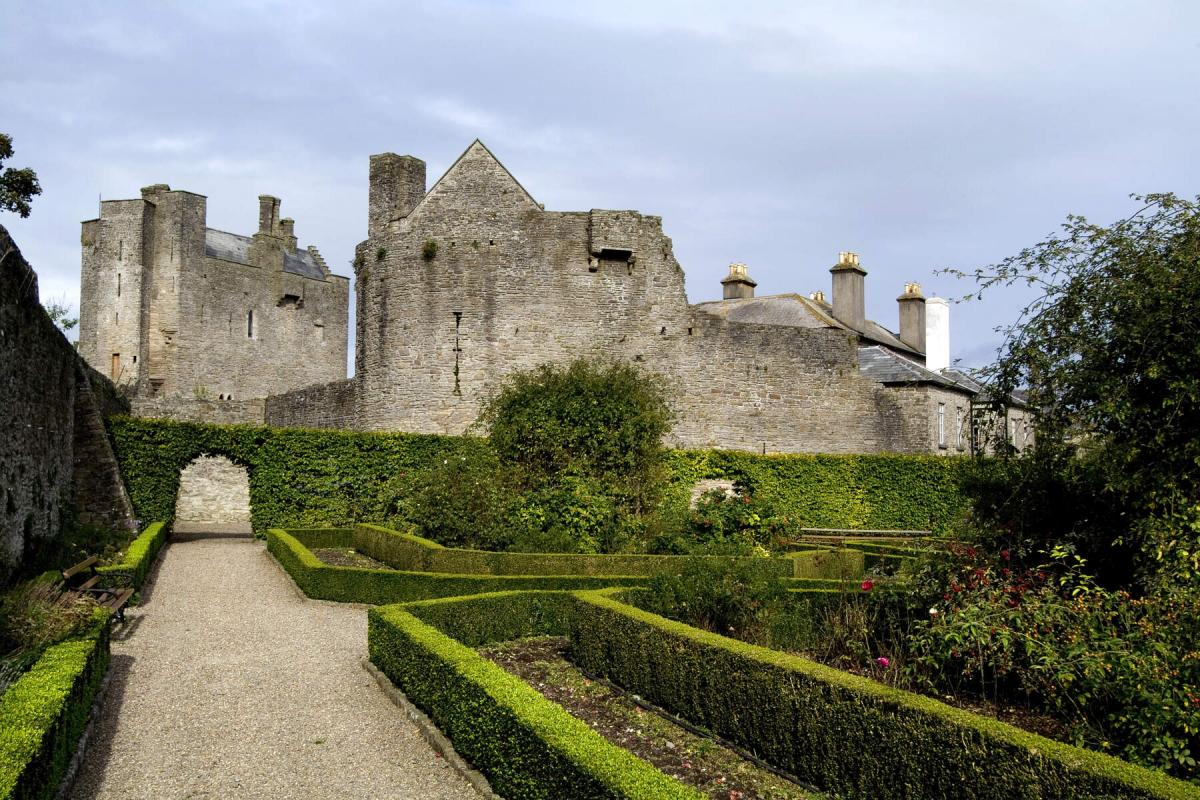
Answer in next week's Newsletter
Last weeks Travel Quiz answer
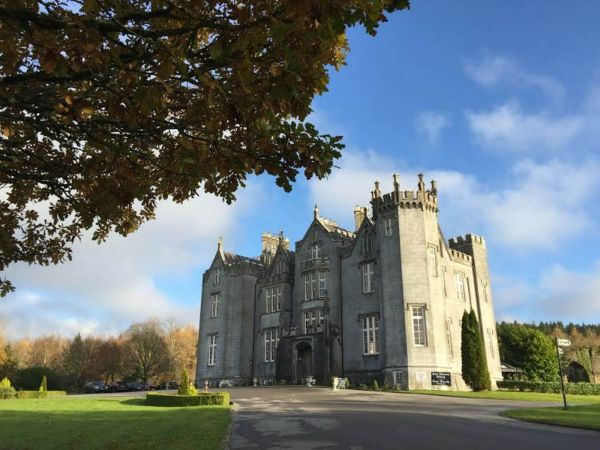
Kinnitty Casrle,
County Offaly
![]()
Irish Language
Submitted by our own Anita

Dia duit Tom, conas ata tu?
There are many unique irish blessings that are used to this day. Even though English is the colloquial langauge of ireland, Irish blesisngs and phrases are incorporated in everyday life and resonate with the people of Ireland.
Dia Dhuit: (jee-ah gutch) Hello
Dia is Mhuire dhuit: (jee-ah-iss mire gutch) Hello to you
Slán agus beannacht Dé ort: (slawn agus banacht jay ort) Goodbye God Bless
Go gcastar an tadh leat: (guh gastar an taw lat) Good luck
Go neirí an bóthar leat: (guh nighree-an-bohar lat) May the road rise to meet you
Codladh sámh agus oíche mhaith: (cudil-sawve-agus eeha-why) Have a good night
Go mbeannaí Dia an teaghlach seo: (guh-manee-jeeah-on-chaglach shoh) May God bless this household
Go mo leithscéal: (guh mo lescale) Excuse me
Go raibh math agat: (guh row mah agat) Thank you
Míle buíochas: (meela bweechas) You'er welcome
Céad míle fáilte: (cade meela fawlche) A hundred thousand welcomes
Sláinte: (slawncha) Cheers
Slan go foill,
Anita.
.
Have you ever wondered what something would sound like when spoken with an Irish accent?
I'm sure you've come across that problem before in your ancestry research.
With a website like Abair, now you can hear anything you want in an Irish accent!
Free Irish Classes
The classes are over zoom and are held at 12:00 eastern time the 1 st Sunday of every month.
It is basic conversational Irish and open to learners of all ages, especially beginners.
All are invited.
Hope to see you there!
slan go foill. Le dea ghui,
Anita
click here to register
![]()
 ..
..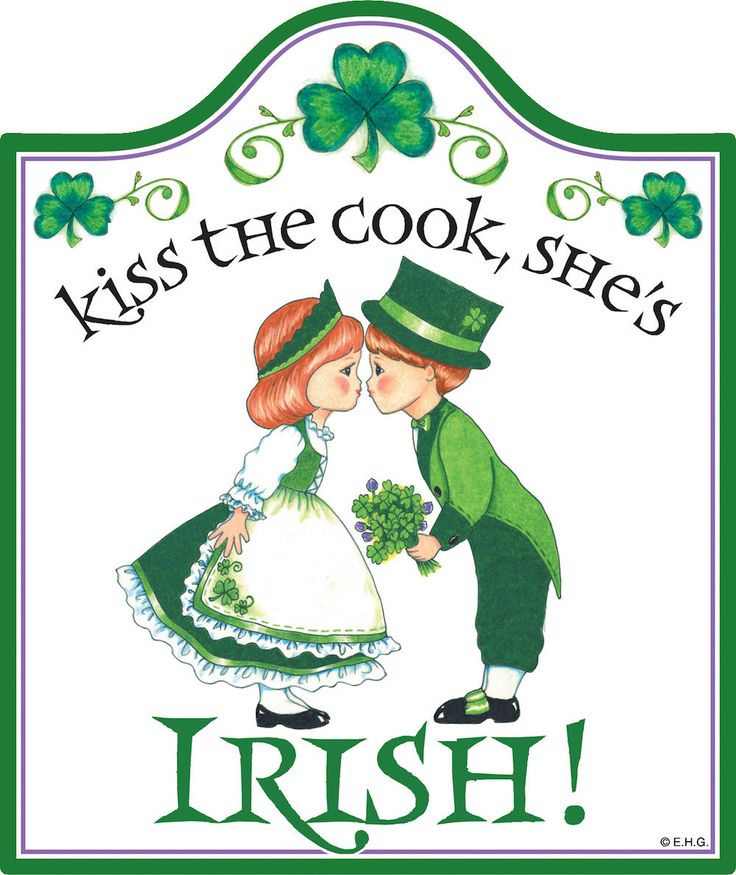
Have an Irish Halloween with this colcannon recipe
Food was a massively important part of Oíche Shamhna and perhaps most famously the potato-y treat, colcannon.
Jordan Mooney JordanMooney_ Oct 07, 2025

Here's how to make Halloween colcannon like Irish people do. Getty Images
Oíche Shamhna (Halloween) is here!
While many people associate Halloween with ghost stories and trick-or-treating, the Irish have a unique relationship with the holiday.
Samhain is an ancient Irish festival that dates back to the time of myths and legends, featuring fairies, Fionn Mac Cumhaill, and the King of Tara. Thought to be descended from Pagan rituals, Samhain, which is one of the four Gaelic festivals of the year, takes place on October 31st.
It was thought that during Samhain, the veil between worlds was thinned so that fairies (the Aos Sí) and spirits could return to the world of the living from the Otherworld. Irish people held feasts to welcome their loved ones home, while lighting bonfires for protection against evil spirits.
Food was a massively important part of Oíche Shamhna. Apples were associated with the Otherworld and immortality, while hazelnuts were believed to bring divine wisdom; therefore, both were used in fortune-telling rituals. Certain dishes were particularly associated with Samhain, such as colcannon, perhaps most famously.
What Is Colcannon?

Colcannon (Bord Bia)
While potatoes are believed to have arrived in Ireland in the 16th century, they quickly became a staple of the traditional Irish diet. Fairly quickly, Irish people adapted traditional Samhain rituals to potatoes, and the result was colcannon, a dish made with potatoes, butter, milk, cabbage or kale, and spring onions. In addition to Halloween, colcannon can often be found on menus around St. Patrick's Day.
Colcannon, which is well-known as an Irish mammy's classic, can vary by region, so you might sometimes see varieties containing onions, chives, or other types of cabbage. While it's a very versatile dish, colcannon is often served with ham, bacon, or corned beef.
Traditionally speaking, colcannon was held in high regard around Samhain and was quickly incorporated into the feasts' menus. Similar to barmbrack and other traditional Irish dishes, prizes or charms were often hidden in colcannon, which were said to predict the diners' futures.
Charms varied by location, but some common types included the following: a coin, which meant wealth in the coming year; a thimble meant you would remain a spinster; a thimble was the male version of a thimble, meaning the diner would remain a bachelor for the next year; a ring meant that you would be married within the following year.
Traditional Irish Colcannon Recipe Serves 8

Colcannon (Getty Images)
Ingredients:
2kg or 8-10 floury potatoes, like russets, peeled and quartered
500g savoy cabbage or kale
125g salted butter
150ml milk
Salt and pepper
2 bunches of spring onions, finely sliced
Method:
Place the potatoes in a pot of cold, salted water and bring to a boil. Then, reduce the heat and simmer until tender. Drain the potatoes, then return them to the pot.
While the potatoes are cooking, roughly chop the cabbage. Place in a pot of cold, salted water and bring to the boil. Cook for three to five minutes, or until the cabbage is just tender – you don't want it to overcook, which is a common mistake. Drain the cabbage.
Add the butter and milk to the potatoes and mash until smooth and creamy. Mix through a pinch of salt and pepper, then taste; you may need to add a little more butter, milk, or seasoning, depending on your preferences.
Mix through the spring onions and serve immediately.
Subscribe to IrishCentral
* Originally published 2022, updated in Oct 2025.
Enjoy

If you have a cherished family Irish recipie share it with us.
And if there's a story that goes with it.....even
better! mail click here ![]()
Fireny@aol.com
![]()
filíocht pronounced FILL-ee-uhkht meaning Poetry
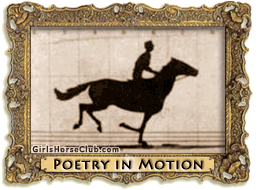

October
by Patrick Kavanagh
O leafy yellowness you create for me
A world that was and now is poised above time,
I do not need to puzzle out Eternity
As I walk this arboreal street on the edge of a town.
The breeze too, even the temperature
And pattern of movement is precisely the same
As broke my heart for youth passing.
Now I am sure Of something.
Something will be mine wherever I am.
I want to throw myself on the public street without caring
For anything but the prayering that the earth offers.
It is October over all my life and the light is staring
As it caught me once in a plantation by the fox coverts.
A man is ploughing the ground for winter wheat
And my nineteen years weigh heavily on my feet.

Patrick Kavanagh can be grumpy and paraochial, willfully so, and as it happens, immensly rewarding as a poet.
To start with the grumpy and parochial, he was
once invited to a banquet of a cosmetic company in Dublin, and as the other
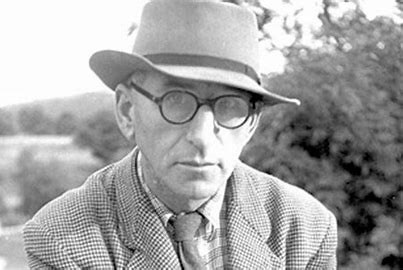 guests were settling down to their haute cuisine, stood up to declare ‘there
are honest men at this moment, footing turf up the bogs of Monaghan.
guests were settling down to their haute cuisine, stood up to declare ‘there
are honest men at this moment, footing turf up the bogs of Monaghan.
You can keep your banquet; and as for your product, I know what you can do with it’*.
Kavanagh knew whereof he spoke: he grew up a poor labourer in the north of Ireland, bordering the Ulster provinces, a world away from relatively metropolitan Dublin.
He tried to make his name with a novel -‘Green Fool’ loosely based on his early experiences and was feted and patronised (by now long forgotten poets) as a rural poet.
He outgrew this reputation, but long held grudges against the Irish literary establishment, against whom some of his less enduring poems rail.
The great Anglo-Irish poet Yeats, he simultaneously resisted and admired. And all that, by the way, is useful to know when reading what is for me the most beautiful of his poems, ‘October’.
![]()
Stories and Tales

"seanchaí"
(pronounced "shan-a-key")
comes from the Irish words "sean" meaning old and "caí" meaning to tell.
WATCH:
Poignant short Irish film shows the reality
of living in rural Ireland in 1974
The short Irish documentary "The Stones Will Speak" features people in the west of Ireland telling the stories of their lives nearly 50 years ago.
In Partnership With: Irish Film Institute Oct 08, 2025
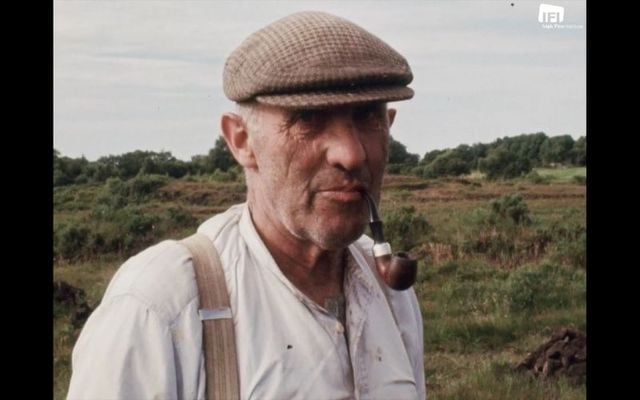
"A still from the 1974 short Irish film "The Stones Will Speak." Irish Film Institute
"The Stones Will Speak," a short Irish film from 1974, is now available to stream for free via the Irish Film Institute's IFI Archive Player. Over magnificent images of Irish natural beauty, featuring Ben Bulben, Achill Island, and Kylemore Abbey amongst other sites, voices of residents of the west coast tell the stories of their lives – dispelling romantic notions of rural life with tales of immigration, loneliness, and hard work.
The first sequence tells the story of an elderly man who recalls memories of cycling to football matches and dancing at the crossroads, but now he and his wife miss their children and grandchildren who have taken the winding road to the city.
Another story is of a farmer who expresses middle-aged regret, the years spent waiting to inherit the family farm, and being unable to find a wife once his father signed it over on his deathbed.
The final tale imagines the thoughts of a fisherman’s son who dreams with naïve optimism about his future when his father is forced to sell his boat and work in the fields.
Written by Fr Cyril Farrell, prior of Benburb Monastery the fictional narration, voiced by Fr Dermot McNeice, has an air of truth, bearing witness to the changeless beauty of the Irish countryside but equally the harsh reality that a man cannot live on beauty or support his family on folklore.
"The Stones Will Speak" is part of The Terence McDonald Collection.
The Irish Film Institute's Terence McDonald Collection
Terence McDonald was a teacher, film historian, film collector, and pioneering amateur filmmaker. Born in the city of Derry in 1926, the films he made during his lifetime are diverse in genre and subject. They range from short comedies and experimental films to expository documentaries covering topics such as traveling and cross-community theatre, mental health services, and films that promoted Derry as a developing city looking hopefully to the future.
His work includes personal projects and films commissioned or supported by a range of public bodies. Terence produced his films under the ‘Fairview Films’ banner, a title derived from the name of the family home in Rosemount Avenue, and somewhat intentionally misleading as he alone undertook all aspects of the work.
With a deep understanding of all aspects of production – his credits include cinematographer, editor, sound recordist, producer, and director – along with a wide knowledge of cinema, McDonald created visually sophisticated and culturally rich work. His films, shot primarily on 16mm film, feature a variety of references and influences, from Battleship Potemkin to Peyton Place, Alfred Hitchcock and Jacques Tati to Buster Keaton and Charlie Chaplin.
They also received widespread recognition with awards from the British Film Institute, the Munich Film Festival and the National Film Institute (now IFI) Annual Film Competition.
McDonald’s work has a notable sense of place. It not only represents the natural beauty of Northern Ireland but captures the various sides of his hometown of Derry through filmic portraits of the city, from the Georgian architecture and thrice–sieged city walls to the growing facilities and industries of the ‘60s. His two homages to the silent comedy era, The Fugitive and The Man from A.U.N.T., offered local audiences the opportunity to see their home on the big screen (perhaps for the first time) as the backdrop to slapstick capers making full use of the city’s walls and hilly streets.
McDonald had several frequent collaborators. Fellow Derry native and former schoolteacher, future Nobel Peace Prize winner John Hume worked with McDonald on several projects promoting the region to potential donors and international tourists, starting with A City Solitary in 1963 and the subsequent The City of Londonderry and Two Hours from London, which all depict an optimism about the prospects for the divided city.
Fr Cyril Farrell, prior of the Benburb monastery, was involved in several of McDonald’s more spiritual pieces, writing Christ-like fable The Secret as well as the cross-community play The Story of Man captured in the documentary Benburb.
Another writer who penned several scripts for McDonald was Gerry Wills, who wrote McDonald’s internationally successful Nebelung, as well as lending his voice to narrate documentaries Ballinascreen and The Portable Theatre.
Northern Irish folk singer Gemma Hasson features in the scores of The Stones Will Speak, Long Hard Road, The Secret, and Requiem for Sally.
The Terence McDonald Collection is held and preserved by the IFI Irish Film Archive and these films are made available with the kind permission of Peter McDonald and Northern Ireland Screen.
"The Stones Will Speak" is published here thanks to the Irish Film Institute (IFI), who IrishCentral has partnered up with throughout 2023 to bring you a taste of what their remarkable collection entails.
You can find all IrishCentral articles and videos from the IFI here.
![]()
The Butter Museum in Co Cork,
a hidden gem for Irish history buffs
The Butter Museum in Co Cork is a celebration of how a small cottage industry has grown into a global business.
Frances Mulraney @FrancesMulraney Oct 08, 2025
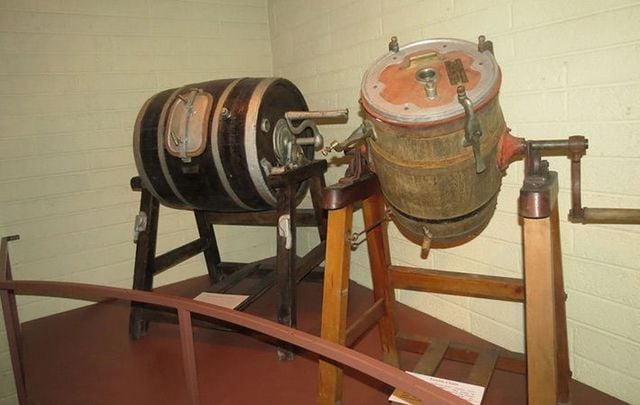
Learn the secret behind the great taste of Irish butter along the banks of the River Lee. Tourism Ireland
The Butter Museum in Co Cork shows off the world-famous Irish dairy products at their finest.
It’s already been proven that Americans just can’t get enough of Irish butter, with wide-favorite Kerrygold becoming the third best-selling butter in the US. However, did you know that such is the love for the Irish dairy goodness that butter has become one of our best tourist attractions?
The search for the secret behind the perfect buttery taste leads American visitors to Ireland to the Cork Butter Museum, the best place to learn all about the culture of butter-making from ancient Ireland up to the present day. There they discover how Kerrygold, our most famous butter brand, came to be.
The museum is in what was once the Cork Butter Exchange, formerly the largest butter exchange in the world. Tens of millions of pounds worth of butter was traded annually from Cork City, from the Cork Butter Exchange, during the 19th century. It was exported as far as Australia and India until the exchange’s closure in 1924.
Dairy and cattle farming has always been one of Ireland's most important industries and thanks to our mild climate which produced great grass growth, Irish cattle have always been naturally fed and this is the key reason Irish butter stands out. The Irish butter industry began to achieve success in the early 1700s, but it wasn’t until the mid-19th century that it began to grace dinner tables the world over.
The Cork Butter Museum is located in the Shandon area on the north side of Cork city, amongst a nest of tiny streets, some of which are still cobbled. The building dates from 1849 and is located near St. Anne’s Church. The church is known for its clock tower which can be seen from all over the city and is locally known as the “Four-faced Liar” as each of its four clock faces tells a different time.
Just beside the museum is the Firkin Crane building, built in the year 1855 to weigh “firkins” (a Danish word for 80lbs) of butter on a “crane.” The unusual rotunda building is now used as a performance space. This area was also once home to the largest Shambles (open-air butchery) in Ireland.
The museum features fantastic exhibitions taking guests on a tour through the history of butter production, from dairy cattle farming to the commercial butter trade, and the museum's pièce de résistance a container of butter believed to be over a thousand years old, perfectly preserved by the bog in which it was found.
Irish folklore contains large dollops of butter and butter-making and this small museum makes great use of the legends as heartedly as we do a slab of Kerrygold butter on a slice of bread (or the trend of Kerrygold in your coffee!).
The museum is a celebration of how a small cottage industry has grown into a global business.
Located close to the River Lee and putting you in a great spot to explore the rest of the city, Cork Butter Museum is also a steal at only €5.00 for adults, €4.00 for students and seniors, €2.00 for children over 12, and completely free for children under 12 in family groups.
If you have the chance, make sure to visit in time to catch a butter-making demonstration.
Learn more at TheButterMuseum.com.
Read more When Kerrygold Pure Irish Butter was officially launched in 1962
* This article was published in 2022 and updated in 2025.
![]()
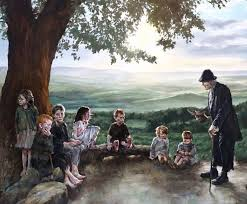
Hedge Schools of Ireland
Photos added by Tommy Mac
Céad Míle Fáilte -
Mike is a little under the weather just now and on doctor’s orders to take a few weeks rest, so it’s Carina here with this week’s Letter from Ireland.
I’ve chosen a letter that’s close to my heart, as I spent my early career teaching lively boys aged 4 to 12. While teaching was challenging, it was no way as difficult a job as my predecessors experienced in the early 1800's. With that in mind, let’s hand things over to Mike and a Letter from the past.
When Education Went Underground:
The Story of Ireland's Hedge Schools Let me start with some questions for you.
Did any of your Irish ancestors start off in one part of Ireland but move to another part of the country at a later stage? What got them moving? What caused them to pick up and cross a few mountains to start a new life in a new corner of Ireland?
John Hartnett, one of our Green Room members, recently shared the following:
"I have been doing research on my father's family. He was born in Tuosist, County Kerry, in 1902 to another John Hartnett.
His father was Jeremiah Bán Hartnett, born possibly in 1829, who I believe was a Hedge School Teacher who came to Kenmare from Abbeyfeale, as the family story goes.
I wonder if you might talk a little more about 'hedge schools' in your weekly letter? John Hartnett."
What a wonderful family story, John! Let's explore the world your ancestor Jeremiah would have known.
From a Chief Family to a Hedge School Teacher
The Hartnett name is found across particular parts of County Kerry, Cork and Limerick, mostly where these three counties meet. This part of Ireland was under the rule of the McCarthys for many centuries, and their chief families in the area (around the town of Kanturk in northwest Cork) were the McAuliffes, O'Riordans, O'Keeffes, O'Callaghans - and the Hartnetts. Are any of your Irish family names here? Do feel free to leave a comment below and let me know.
However, by the end of the 1600s, Cromwell had come and gone from Ireland and the age of the Irish Chieftain was over. The "Penal Laws" were also introduced - laws designed to "encourage" the native Irish (and Protestant dissenters) to convert to the established church. These penal laws made it very difficult to receive an education, enter politics or a profession unless you first became part of the Church of Ireland.
Yet at the same time, the world was becoming a more commercial place, and this was recognised by many, both poor and rich. It was understood that a basic education - reading, writing, arithmetic - would help your children survive in a world that extended way beyond your local village and family.
Learning by the Roadside
While Catholic schools were officially forbidden
through most of the 1700s, a new type of informal school - the "hedge school"
- 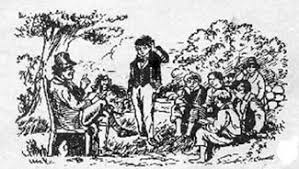 sprang
up across rural Ireland. We might view these places romantically in our mind's
eye, picturing a small group of youngsters learning beside a babbling brook,
staying one step ahead of the law as they mastered their sums and Latin. However,
while some of these schools were indeed held outdoors, most were semi-permanent
and located in old barns and outbuildings. They were also mostly tolerated by
the local administrations.
sprang
up across rural Ireland. We might view these places romantically in our mind's
eye, picturing a small group of youngsters learning beside a babbling brook,
staying one step ahead of the law as they mastered their sums and Latin. However,
while some of these schools were indeed held outdoors, most were semi-permanent
and located in old barns and outbuildings. They were also mostly tolerated by
the local administrations.
The original teachers in Ireland (reaching way back before the 1700s) were probably the "Bards" and "Filidh" (poets) - an established Gaelic class right up to the 1600s. However, later teachers in the hedge schools were most likely the children who graduated from this system themselves.
Teachers like Jeremiah Bán Hartnett.
The hedge schools were observed by an Englishman called William Reed who was touring around Ireland. He noted:
"A desire for education manifests itself among the lower orders of the people. In my wandering through the country, I found several very humble seminaries, called Hedge Schools. Not having any other convenience, the scholars are taught reading, writing etc., in the open air. There are also itinerant teachers, who become inmates of a cabin for several weeks together, and who receive only a temporary lodging and a few potatoes for instructing juvenile inhabitants."
The Penal Laws were relaxed by the late 1700s, and this allowed for a more structured and visible schooling system. However, Ireland was still a very poor place and many of the schoolhouses we see today were not built until the 1880s. The hedge school teacher still had a place in the rural highways and byways of Ireland right through the 1800s.
One Teacher's Journey
Can you imagine what life must have been like in Ireland for a young man born in 1829? By the time Jeremiah Hartnett reached his twenties, the Irish Famine was coming to an end. He must have attended a hedge school in his hometown of Abbeyfeale in County Limerick and then started to assist some of the other children around him.
Perhaps his talent was noticed and he travelled from parish to parish until one day, he too, became a hedge school teacher. Somewhere along the way, he ended up in Tuosist - a place ravaged by the recent famine. He began to help the local children with their schooling, met a girl and decided to settle down and start a family.
By the mid-1880s, Jeremiah Bán Hartnett would have been in his fifties, and his children were attending the newly-built National School in Tuosist. You'd wonder what must have been on his mind as he watched the first stone being laid on that new schoolhouse. One thing's for sure - he had done what was necessary for many years, but his hedge school days were now at an end.
A Legacy of Learning
The hedge schools represent something profound about the Irish character - a stubborn refusal to let circumstances dictate our future. When formal education was denied, we found another way. When schoolhouses were forbidden, we taught under the open sky. These travelling teachers, often poorly paid and living hand-to-mouth, kept the flame of learning alive during one of the darkest periods in Irish history.
Many thanks to John Hartnett for prompting this letter with the story of his Hartnett ancestors. As to where his Hartnett family originally came from in Abbeyfeale - we'll have to leave that story for another day!
That's it for this week. As always, do feel free to email me a comment and share your stories and Irish surnames in your family. Fireny@aol.com
Did any of your ancestors attend a hedge school, or perhaps even teach in one?
Slán for now,
Mike (and Carina)
Already a Green Room Member? You can comment on this letter in the Green Room forum here.
![]()
On This Day:
Oliver Plunkett was canonized,
becoming the first new Irish-born saint in 7 centuries
St. Oliver Plunkett, the Archbishop of Armagh and Catholic Primate of All Ireland, was the last Catholic to be martyred in England in 1681.
Kenneth Haynes @IrishCentral Oct 12, 2025

St. Oliver Plunkett, an Irish man, became the last Catholic martyred in England in 1681. Getty
Saint Oliver Plunkett, the Archbishop of Armagh and Catholic Primate of All Ireland, was the last Catholic to be martyred in England. On October 12, 1975, he was canonized.
Born in 1625, at Loughcrew, near Oldcastle, Co Meath, Plunkett's ministry was set in troubled times. The Catholic cause suffered greatly after the Cromwellian conquest of Ireland, which eventually resulted in a ban on the public practice of Catholicism. Many Catholic clergymen were executed, and Plunkett spent much of his life in hiding, working to advance faith in the Church from behind the scenes.
Plunkett built schools both for the young and for clergy, whom he found "ignorant in moral theology," and took on the problem of alcoholism in the clergy writing, "Let us remove this defect from an Irish priest, and he will be a saint."
On July 1, 1681, Plunkett became the last Catholic martyr to die in England when he was hanged, drawn, and quartered after a kangaroo court "trial." He was beatified in 1920 and canonized in 1975.
In 1997, he became a patron saint, adopted by a prominent prayer group campaigning for peace in Ireland, and was named Saint Oliver Plunkett for Peace and Reconciliation.
The Ghost of Oliver Plunkett?
In 2010, British author Vikki Bramshaw claimed to have captured a ghostly apparition of Saint Oliver Plunkett on video while visiting Ireland.
Bramshaw said she only discovered the image of "the ghost" when she was later reviewing some of the cellphone footage she took at Saint Peter's Church in Drogheda, Co Louth, where Plunkett's head and other remains have been held since 1921.

The shrine of Saint Oliver Plunkett in St. Peter's Church in Louth (David Iliff - License: CC BY-SA 3.0)
"I don't really believe in ghosts or anything like that, so I was a bit spooked out to see it when I was checking my video when I got home," Bramshaw told the Irish Independent at the time.
"I visited Drogheda between March 10-17 and was taken around Newgrange and other tourist sites, and Saint Peter’s was just one of our stops," she said.
"I was just filming the cell door with my camera phone, and didn't notice anything unusual at the time, but when I checked it that night, I was definitely a bit spooked by what I saw."
The video shows what appears to be a face that appears at the small hatch in the door a number of times.
"I watched it, again and again, to see if it was a reflection, but there are other things reflected in the glass, and they're not moving, and this does," said Bramshaw, who lives in Southampton.
"I consider myself quite a down-to-earth person, and am keeping an open mind on what it might be."
There have been no other reported sightings of St. Oliver Plunkett in the church, and Bramshaw had no idea why he would have chosen her to make a first appearance.
Of course, Bramshaw was not exactly a stranger to the paranormal. She is the author of many books on witchcraft, including her latest, "Craft of the Wise: A Practical Guide to Paganism and Witchcraft."
Her biography on Amazon.com says, "Bramshaw is a student, teacher, and author of the esoteric mysteries and initiatory witchcraft. Having trained for almost 10 years under respected elders, she now runs her own coven who work on the edge of the New Forest, in Hampshire."
"I suppose I should be very honored if he did pick me," she added, "but it was very unnerving and a little bizarre to watch it back."
* Originally published in 2010. Updated in Oct 2025.
![]()
News of Interest,,,,,
"House of Guinness" sparks huge Dublin tourism spike
but visitors issued warning
The new Netflix series "House of Guinness" has sparked a massive spike in tourists visiting Dublin.
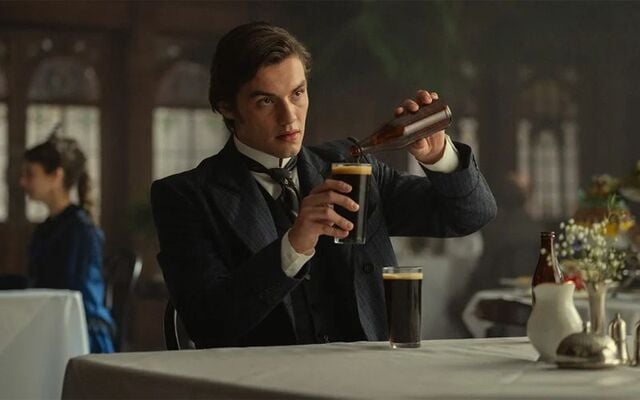
."The House of Guinness". Netflix
It was released on September 25 but excitement had been drawing attraction to the capital well beforehand.
Since the trailer was released, there has been a 551% surge in demand for ‘Visit Dublin’ in the past month, with the show also now being number one on Netflix in the UK.
With iconic Dublin attractions front and centre in the show, including St James’s Gate Brewery, travellers are expected to flock to the city to experience the sights for themselves.
"House of Guinness" is a drama inspired by real-life events, which goes through the story of the Guinness dynasty.
Due to the large amount of visitors the actual Storehouse receives, the series was filmed at Liverpool’s Stanley Dock to replicate it instead.
This hasn’t affected the attention drawn to the real Guinness Storehouse, though, with interest rising by 108% over the past day.
However, new research from car leasing experts, Nationwide Vehicle Contracts, has revealed that Dublin is the fifth hardest city in the world to navigate by car.
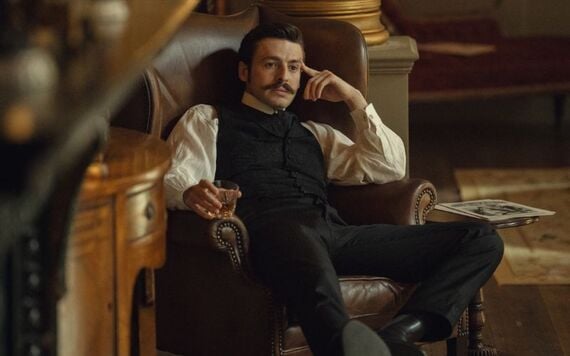
Anthony Boyle in "The House of Guinness".
Therefore, visitors are advised that driving around the city without taking expert tips into account could lead to stress during their staycation.
Dublin records the second-highest number of direction-based searches globally, over four million queries from both tourists and residents, second only to Madrid, highlighting how often people get lost or confused.
Dublin is 10th on TomTom’s list of the world’s most congested cities, with a 47% congestion rate.
On average, drivers lose 155 hours a year to traffic, and a 10km journey takes nearly 33 minutes.
To help those planning to drive when visiting Dublin, Keith Hawes, Director at Nationwide Vehicle Contracts, has shared his top tips for navigating the complex roads:
"Before you arrive in Dublin, take a few minutes to review the journey to your accommodation and key places you want to visit beforehand. This will allow you to know potential blockers, such as roadworks and major diversions. You can then adapt your car journey accordingly to ensure a smooth experience.
"Drivers in Dublin can use the River Liffey to their advantage, as the water divides the North and South of the city in two, so if in doubt, follow this to ensure you are on the correct side of the city that you need to be.
"Dublin’s city centre is full of similar road names such as Camden Street and Camden Row. Make sure to review which roads you are heading to or going past on your way to your destination to avoid any confusion or wrong turns.
"Driving habits may be more fast-paced as Dublin is a major city. Don’t take it personally if a car overtakes or speeds past you – stick to your own driving pace and what you feel comfortable with.
"Signal can be patchy, especially if you’re not using your normal network, so ensure that your maps are downloaded offline so you’re never left stuck going around in circles or getting lost from the wrong turns."
Nationwide Vehicle Contracts looked at various factors to create a ranking to identify which global cities are the most difficult to navigate by car.
They analysed search volumes for ‘directions’, congestion levels, congestion world score and median mobile speed to create the weighted ranking of 35 countries worldwide based on the Global Power Cities Index (GPCI).
* This article was originally published on Extra.ie.
![]()
"Ireland stands ready to assist"
as Israel and Hamas "sign off" on "peace plan"
Ireland's leaders have welcomed the US announcement that Israel and Hamas have agreed to the first phase of a ceasefire in Gaza.
Kerry O'Shea @kerry_oshea Oct 09, 2025

Ireland's Tanaiste and Minister for Foreign Affairs and Defence Simon Harris. RollingNews.ie
Ireland's Tánaiste Simon Harris and Taoiseach Micheál Martin have both welcomed the announcement of the first phase of a ceasefire and peace deal for Gaza, which was announced on Wednesday, October 8.
On Wednesday evening, US President Donald Trump announced on his Truth Social platform that "Israel and Hamas have both signed off on the first Phase of our Peace Plan."
Trump wrote: "This means that ALL of the Hostages will be released very soon, and Israel will withdraw their Troops to an agreed upon line as the first steps toward a Strong, Durable, and Everlasting Peace. All Parties will be treated fairly! This is a GREAT Day for the Arab and Muslim World, Israel, all surrounding Nations, and the United States of America, and we thank the mediators from Qatar, Egypt, and Turkey, who worked with us to make this Historic and Unprecedented Event happen. BLESSED ARE THE PEACEMAKERS!"
On Thursday morning, the AFP reported that the deal will be formally signed later on Thursday in Egypt.
While exact details of the agreement have yet to be made public, the AFP reported that Hamas will release 20 living hostages at the same time, and Israel will release nearly 2,000 Palestinian prisoners - 250 among those serving life sentences and 1,700 others detained since the start of the war.
The exchange should take place within 72 hours of the implementation of the deal. The deal also includes an increase in aid entering Gaza, the "return of displaced persons from the south of the Gaza Strip to Gaza (City) and the north immediately," and "scheduled withdrawals" of Israeli troops.
The deal was largely welcomed in both Gaza and Tel Aviv.
"Critical moment"
"I strongly welcome the announcement overnight by President Trump that Israel and Hamas have agreed on the first phase of a ceasefire and peace deal for Gaza," Ireland's Tánaiste Simon Harris said on Thursday.
"We are now at a critical moment that can see an end to the war," the Tánaiste said in a statement welcoming the news that
"There is an urgent need to implement a plan that can end the fighting, pave the way for the release of all Israeli hostages, the withdrawal of Israeli forces to agreed lines and the entry of vital aid into Gaza.
"This historic moment, if grasped by all, can finally end the unconscionable human suffering. It can stop the dreadful bombing, silence the guns, end the famine and genocide, and allow a surge of humanitarian aid into Gaza.
"It is an opportunity to agree on a path to a permanent peace and security for Israelis and Palestinians alike. The road ahead will be challenging, including progressing towards a two state solution, but this is an opportunity that must be grasped.
"This is a significant moment after two horrific years. My thoughts today are with the people of Gaza, who have suffered so much, and with the hostages and their families.
"Ireland stands ready to assist in every practical way to achieve peace and to end human suffering."
"Ireland stands ready to assist"
In a subsequent statement, the Tánaiste said: "Following developments overnight in the Middle East, I can confirm that I have instructed my officials to intensify preparations for a substantial contribution to Gaza.
"This contribution will be two-fold, both in respect of the immediate surge in humanitarian aid that is needed without delay and a broader package for the reconstruction of Gaza. Ireland stands ready to assist in every practical way to achieve peace and to end human suffering.
"I can confirm that a consignment of 1,500 tents is being loaded by the International Organisation for Migration in Amman today, for delivery to Gaza in the coming days. It includes 750 tents from Ireland's humanitarian stocks and 750 from EU humanitarian stocks."
"Work towards a permanent and just peace"
Ireland's Taoiseach Micheal Martin also welcomed the developments, writing on social media: "I welcome the announcement of a ceasefire agreement and hostage release deal in Gaza.
"I urge all sides to fully abide by this ceasefire and for the release of all hostages, and an immediate surge of humanitarian aid to the people of Palestine.
"I commend the diplomatic efforts by the US, and partners across the region and call on all sides to work towards a permanent and just peace. The war and the killing must stop."
![]()
Fred J. Noonan back in focus
as new Amelia Earhart expedition sets sail for Nikumaroro
A relaunch of the search for Amelia Earhart’s Electra has renewed attention on her Irish American navigator Fred J. Noonan and the new evidence researchers say points to a wreck in a South Pacific lagoon.
IrishCentral Staff @IrishCentral Oct 07, 2025
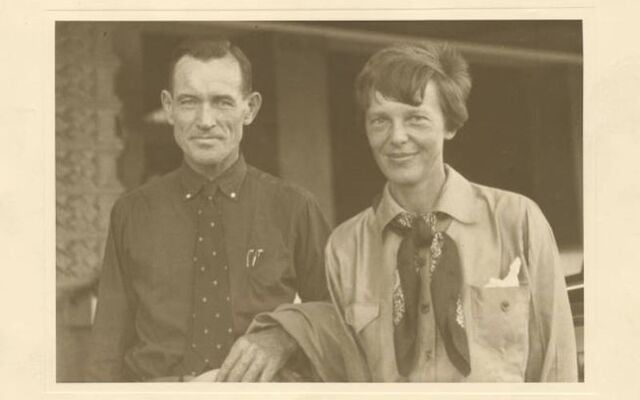
Navigator Fred J. Noonan and legendary pilot Amelia Earhart. Purdue
Nearly 90 years after Amelia Earhart and her Irish American navigator Fred J. Noonan disappeared, a relaunch of the Nikumaroro expedition has put Noonan back in the spotlight. Newly surfaced letters and the team’s focus on a so-called Taraia Object have researchers hopeful that fresh evidence will finally clarify the navigator’s crucial role in Electra’s final hours.
Nearly 90 years after Amelia Earhart and her Irish American navigator Fred J. Noonan vanished on July 2, 1937, the Archaeological Legacy Institute and Purdue Research Foundation will mount a November expedition to investigate a visual anomaly called the Taraia Object on Nikumaroro Island. Dr. Richard Pettigrew said, “What we have here is maybe the greatest opportunity ever to finally close the case,” and the team plans to use sonar magnetometry and careful dredging to learn whether the Electra lies beneath lagoon sediment.
Noonan was more than a supporting name in a mystery he helped to create. Frederick Joseph Noonan was born in Cook County, Illinois, and carried an Irish family story on his mother’s side. In the weeks before the final flight, he left detailed, newly surfaced correspondence that sheds light on his navigation plans and thinking. A long-lost 17-page letter dated June 23, 1937, offers a rare first-person view into the navigator’s notes and route planning and has been highlighted by historians tracing Noonan’s role.
His skill was celestial navigation and he was the man charged with keeping Earhart on course toward tiny Howland Island. Radio traffic from the flight suggested the pair were uncertain of their position with Earhart reporting “by Noonan’s reckoning the plane should be just over the Itasca” a line historians have returned to repeatedly when reconstructing those final hours. The Nikumaroro hypothesis argues that Electra may have attempted a shallow landing on a reef and then been buried by shifting sediment and storms over decades, CBS News reports.
Purdue and ALI have framed the mission as both archaeological and deeply personal. Pettigrew added, “With such a great amount of very strong evidence, we feel we have no choice but to move forward and hopefully return with proof.” Purdue Research Foundation spokespeople have said the university would like to see the Electra returned if it can be identified and recovered, noting Earhart’s ties to Purdue and her wish that the plane one day come home.
If the team locates wreckage, the find could reshape how Americans remember the final chapter of a flight that captivated the world and that holds particular resonance in Irish American archives, where Noonan’s own voice has finally been heard again through newly discovered papers.
The expedition will travel by sea in early November with a 15 to 16-person field team, and investigators emphasize they will document and test everything before any excavation. As they prepare to enter the lagoon, researchers say they are driven by evidence and by the hope of finally answering a question that has haunted aviation history for generations.
![]()
A Little Humor 

A man comes home from an exhausting day at work, plops down on the couch in front of the television, and tells his wife,
"Get me a Guinness before it starts."
The wife sighs and gets him a Guinness. Fifteen minutes later, he says,
"Get me another before it starts."
She looks cross but fetches another Guinness and slams it down next to him. He finishes that one and a few minutes later says,
"Quick, get me another; it's going to start any minute."
The wife is furious. She yells at him,
"Is that all you're going to do tonight? Drink beer and sit in front of that TV? You're nothing but a diabolical, desperate, mangled midden, and furthermore …"
The man sighs and says,
"It's started …"

![]()
Times when you might be excused for using foul language

![]()
Funny Headlines


![]()
"Funny Statue Photos"


![]()

Church Bloopers
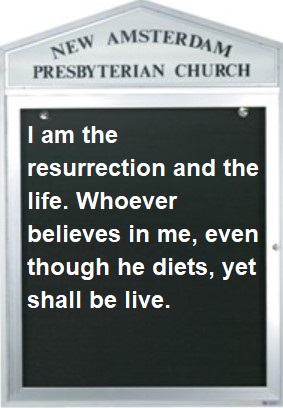

![]()
From my wife Donna




![]()
Many News items, stories, recipies, jokes and poems are taken from these sites with their generous permission.
Please support them my clicking on the links below and sign up for their free newsletter.
 .....
..... ....
....
Subscribe
to IrishCentral  ..
.. ....
....

 .........
.........![]() ......
......
![]()
Welcome to
Tír na mBláth
(Land of Flowers)
Tír na mBláth is one of hundreds of branches throughout the world of Comhaltas Ceoltóirí Éireann (CCÉ) pronounced "kol-tus
kyol-tori air-in", the largest group involved in the preservation of
Irish music, dance and song.
throughout the world of Comhaltas Ceoltóirí Éireann (CCÉ) pronounced "kol-tus
kyol-tori air-in", the largest group involved in the preservation of
Irish music, dance and song.
Our board and membership is made up of Irish, Irish descendants, and all those who support, celebrate and take pride in the preservation of Irish culture.
We also aim to promote good will and citizenship.
Interested in belonging to Tír na mBláth? Feel free to download our membership form
Facebook page is at Tír na mBláth
Our meetings and several events are held at Tim Finnegan's Irish Pub in Delray Beach Florida.
![]()
Well, that's it for this week.
Slán abhaile
Pronunciation: slawn a-wol-ya
Meaning: Safe Home

Sláinte,
Tom Guldner (Tommy Mac)
Slán agus beannacht, (Good-bye and blessings)
Fireny@aol.com
Number of visitors to this website since Sept 2022
..